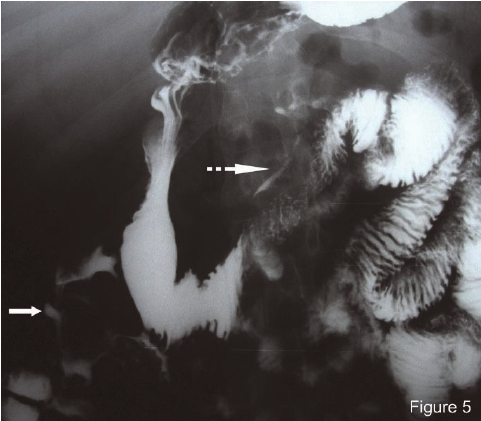The barium meal transit study is an essential diagnostic procedure used to evaluate the small bowel’s function and structural abnormalities. Understanding the factors that influence the acceleration of barium meal transit through the small bowel is crucial for accurate diagnosis and effective treatment of gastrointestinal disorders. This article delves into the techniques, factors, and clinical significance of accelerated barium meal transit.

Understanding Barium Meal Transit Through the Small Bowel
A barium meal study involves ingesting a barium sulfate solution, which coats the lining of the gastrointestinal tract, making it visible under X-ray imaging. The transit time of barium through the small bowel provides critical insights into conditions such as motility disorders, malabsorption syndromes, and anatomical abnormalities.
Normal Transit Time and Key Indicators
- Typical Transit Time: The normal transit time of a barium meal through the small bowel ranges between 1.5 to 4 hours. Variations outside this range may indicate underlying issues.
- Key Indicators: Radiologists assess the progression of the barium contrast material to identify any signs of obstruction, rapid transit, or delayed motility.
Factors Contributing to Accelerated Barium Meal Transit
Several physiological and pathological factors influence the acceleration of barium meal transit through the small bowel. These include:
1. Hyperthyroidism
Hyperthyroidism is a common cause of increased gastrointestinal motility. Elevated thyroid hormone levels enhance peristaltic activity, resulting in faster barium transit.
2. Infectious Gastroenteritis
Acute infections in the gastrointestinal tract can stimulate hypermotility due to inflammation and irritation, thereby reducing transit time.
3. Irritable Bowel Syndrome (IBS)
Patients with IBS, particularly those with the diarrhea-predominant subtype, often exhibit accelerated barium meal transit due to heightened intestinal motility.
4. Short Bowel Syndrome
In cases where portions of the small bowel have been surgically removed, transit time may decrease significantly due to the reduced length of the intestine.
5. Dietary and Medication Influences
- High-Fiber Diets: Diets rich in insoluble fiber can expedite the movement of contents through the small bowel.
- Laxatives and Prokinetics: Medications designed to stimulate bowel movement can also accelerate barium transit.
Clinical Implications of Accelerated Barium Transit
An accelerated barium meal transit has significant diagnostic and therapeutic implications. Understanding its clinical context is crucial for proper patient management.
1. Malabsorption Syndromes
Rapid transit may impair the small bowel’s ability to adequately absorb nutrients, leading to conditions such as steatorrhea, vitamin deficiencies, and weight loss.
2. Diagnostic Challenges
Accelerated transit can obscure the visualization of subtle abnormalities in the bowel wall, complicating the detection of conditions like Crohn’s disease or small bowel tumors.
3. Treatment Adjustments
In patients with hypermotility disorders, treatment strategies often include dietary modifications, antidiarrheal medications, and addressing the underlying cause of rapid transit.
Techniques for Assessing Barium Meal Transit
Radiologic imaging is the cornerstone of evaluating barium meal transit. Techniques include:
1. Fluoroscopy
Fluoroscopy provides real-time imaging of the barium’s movement through the small bowel. It allows radiologists to pinpoint areas of abnormal transit.
2. Timed Radiographs
Sequential X-rays taken at specified intervals enable the measurement of transit time and the identification of abnormalities such as strictures or rapid progression.
3. Advanced Imaging Techniques
- CT Enterography: Offers high-resolution images to complement barium studies.
- MRI Enterography: Useful for patients with contraindications to radiation exposure.
Management of Accelerated Barium Meal Transit
Managing accelerated transit involves addressing the underlying cause while mitigating its clinical impact.
1. Dietary Modifications
Encouraging a balanced diet low in insoluble fiber can help normalize transit times in certain patients.
2. Medication Adjustment
Antimotility agents such as loperamide or bile acid binders can be prescribed to slow bowel movement and enhance nutrient absorption.
3. Treatment of Underlying Conditions
Treating primary causes like hyperthyroidism or infections is critical to resolving rapid transit issues.
4. Patient Monitoring
Regular follow-up with imaging studies and symptom assessment ensures that interventions are effective and complications are minimized.
Understanding and managing the acceleration of barium meal transit through the small bowel is integral to the diagnosis and treatment of gastrointestinal disorders. By recognizing the contributing factors and employing tailored therapeutic strategies, healthcare providers can improve patient outcomes and ensure diagnostic accuracy.
myHealthMag